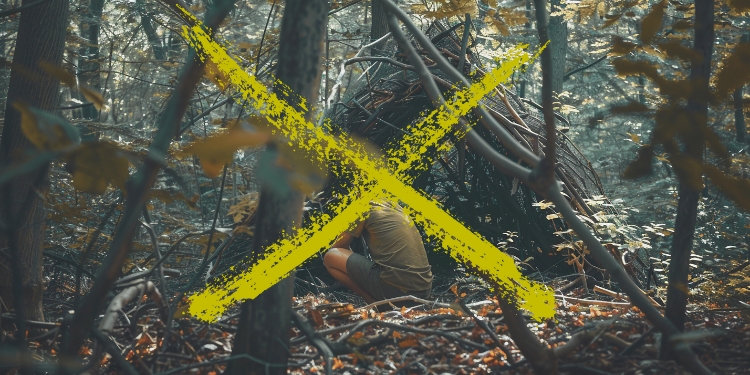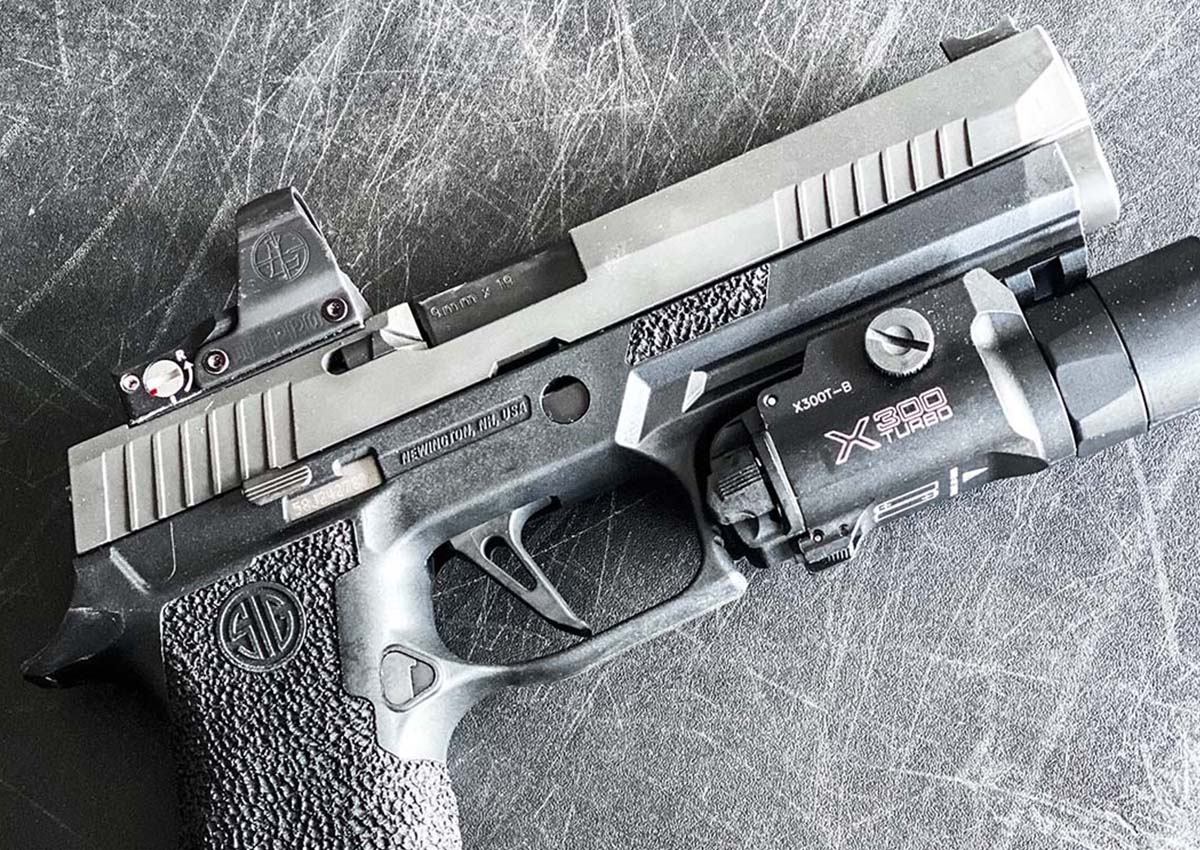How to Fish a Chatterbait: A Complete Guide

In 1998, lure designer Ron Davis came up with a way to attach a hex-shaped blade to a jig. He would go on to sell his design to Z-MAN, but not before selling thousands of these “Chatterbaits.” Professional anglers started winning tournament after tournament on this innovative bait that the fish hadn’t seen before. The rest, as they say, is history.
See It
Today, the “bladed jig” is one of the most popular bass fishing baits out there, with several companies coming out with their own version, claiming never-before-seen vibrations and actions. So what makes this bait so popular? In short, it’s versatile. You can fish it on any body of water, in any depth, and any time of the year and have success.
Here’s what you need to know about how to fish a chatterbait.
When to Throw a Chatterbait
While you can truly fish a chatterbait anywhere at any time and still get bites, I’ve always found it to be a killer pre-spawn and immediate post-spawn option. During the pre-spawn, as the bass flood to the shallows in preparation for the spawn, burning a chatterbait through stump fields, around laydowns, and over the top of emergent vegetation can be a great way to catch big bass, and lots of them.
After the spawn, as the bass head out of their spawning flats to the first drop off or nearest piece of cover, a chatterbait can shine again. One of my favorite places to fish a chatterbait in the immediate post-spawn is in the now thicker grass beds in 5- to 10-foot of water. Working your bait in milfoil or hydrilla means you’ll have to yank the bait to keep it moving through thicker grass stems, causing an incredibly erratic action that big post-spawn bass can’t resist.
Tungsten Versus Lead Chatterbaits
While the original chatterbait designed by Ron Davis featured a lead jig head donned with a blade, after the chatterbait design gained popularity through Z-MAN, different head designs came to light. The most popular being the tungsten head. Whether it’s the Z-Man Jack Hammer, Z-Man Tungsten Elite EVO, or the Strike King Thunder Cricket, the tungsten chatterbait has become a staple for hardcore bass anglers.
The reason why comes down to fall rates and the unique sound the tungsten head makes. First and foremost, the fall rate increases drastically when tungsten jig heads are used on a bladed jig. In the case where the head size of the jig looks the same, a lead head may weigh 1/4 ounce, while the tungsten is a 1/2 ounce. That allows you to fish the same bait profile in deeper water scenarios, or simply move the bait differently with a stop-and-start again retrieve.
As for the sound tungsten makes, it’s simply different from lead. Denser metal offers a higher pitch pinging noise underwater when compared to the dull thud of a lead head. Depending on the fishing pressure in a given body of water, that little difference in pitch can be the difference between getting bites or getting skunked.
While it seems that most serious bass anglers have adopted the tungsten head, more casual anglers are still sticking with lead. The main reason? Price. Most tungsten head chatterbaits average right around $15 per chatterbait, while the original lead head chatterbaits average under $5. While most people believe you get what you pay for, I personally prefer having both options to choose from depending on where I’m fishing and the likelihood of snags that may claim my bladed jigs.
Understanding Different Chatterbait Trailers
When deciding which trailer to adorn your chatterbait with, there are some simple, yet often overlooked intricacies to consider. Mainly, what are you trying to imitate? For most bass anglers, this answer will be a baitfish. If that’s the case, you’ll be fishing your chatterbait higher in the water column, burning it over grass beds or laydowns, trying to entice a predatory bass to strike from the depths.
When you’re imitating baitfish, a paddle tail swimbait or a straight tail swimbait will be your best bet. The kicking motion of the paddle tail paired with the erratic action and thump of the blade will make this an aggressive moving bait that hungry bass can’t resist.
Now, let’s say you’re on a body of water that isn’t brimming with baitfish, but instead, you’ve got a really healthy population of panfish and crawfish. This is where a creature bait or even a crawfish trailer may come in handy. The erratic darting of the bladed jig paired with some flapping claws looks eerily similar to a fleeing crawfish or wounded panfish swimming along a rocky bottom. Typically, in these scenarios, your best bet is to slowly crawl the chatterbait along the bottom with little erratic reel handle twitches to try to trigger a strike.
Fishing a Chatterbait Without a Trailer
Believe it or not, you can fish this bait with zero trailer, just the skirt. This gives the bladed jig a much different action that the fish aren’t used to seeing. While I don’t do this very often, it can be a great way to get some extra bites on heavily pressured bodies of water where plenty of other anglers are throwing trailered chatterbaits. Showing the bass something new, unique, or different is typically a great way to get some quality bites.
Selecting the Right Chatterbait Color
I stick to a few main colors throughout the year. Here are my go-to’s and when they shine.
Fire Craw/Red
We all know about the Rayburn reds and the Toledo gold infamous spring lipless crankbait bite, and this applies to the bladed jig as well. This is your big pre-spawn color, when bass are feeding heavily on crawfish. The bladed jig is a good option when the fish want something just a bit more subtle than the lipless crankbait.
Green Pumpkin
Just like a normal jig, I want this color when I’m fishing in clearer water, to give the fish a more natural look. Simply put, if you’re ever unsure what color to throw when bass fishing, you can’t go wrong with green pumpkin.
White or White Chartreuse
This is a great shad imitator, but also shines in water with less visibility. In bodies of water that are often muddied after a heavy rain, an all white or white chartreuse chatterbait can help the fish key in on the bait both visually and through their lateral line that allows them to feel the thump of the blade.
Black and Blue
This is another muddy water choice that works well when paired with a trailer that moves water. Black and blue is known to get the fish’s attention in muddy and tannic water. Depending on where you’re fishing, black and blue might be a go-to color combination.
Blade Colors
Be sure to play with the blade colors, too. The most common blade colors are silver and gold, but there are also painted blades that create a more natural look. I’ll try different combos until I find the one that seems to be working the best, but I typically find myself going for the gold blade in most situations, especially tannic waters.
Selecting the Right Rod and Reel for Fishing a Chatterbait
As with most popular bass fishing techniques, there is technique-specific gear you can purchase to really get the most out of each cast. When fishing a chatterbait, you want a rod that is similar to a squarebill crankbait rod, one that has a fast action tip, but offers a thick backbone for jamming the hook home.

See It
One of my favorite chatterbait rods is the Team Lew’s Signature Series Andy Montgomery Chatterbait rod. At 7’3″, this rod allows me to make long, accurate casts and the medium-heavy power helps ensure a solid hookset once a bass engulfs my chatterbait.

See It
As for the reel, test a variety of gear ratios until you find one that works well for you. For me, I struggle with slow rolling my chatterbaits when I’m fishing them on a higher gear ratio reel like a 7.1:1. So I typically opt for a lower gear ratio like a 6.2:1. In my opinion, I can always reel faster if need be. A great option for a lower gear ratio chatterbait reel is the Lew’s KVD Baitcast reel. It’s got a nice drag system and low profile feel so you can fish with it all day without feeling worn out.
How to Fish a Chatterbait: Tips and Tactics
Trim the Skirt
Trimming or even removing the skirt is going to do a few things for you. First, it will help the blade maneuver through grass better, because there’s less body to hang up. Most importantly though, it’s going to “hunt” better, meaning the bait will have more of an erratic side-to-side action. This gives the fish a different look, and it increases your odds of enticing a reaction bite. Removing the skirt gives the bait a more subtle, streamlined appearance, which will help in clear-water situations. This is very beneficial when the fish are keyed in on shad.
Vary Your Retrieve
This applies to most all moving baits, but I find it to be extra applicable to bladed jigs. Since many anglers stick to a basic straight retrieve, the fish are highly accustomed to seeing that presentation. When anglers vary the retrieve and add a few hard cranks, it gives the fish a different look and really imitates wounded, frantic prey. In clear water applications, it’s typically best to use a faster retrieve. With a faster retrieve, finicky fish don’t have as much time to think or get a close look before engulfing the bait. In warmer water, I tend to fish the bait even more erratically, while cooler temps call for a slower speed.
Experiment with Different Brands, and Different Models
There will be days when fish are keyed in on bladed jig “A,” and then suddenly, they prefer the vibration of bladed jig “B.” So be sure to experiment with several different makes and models and let the fish tell you what they like on any given day. If you’re not getting bites, switch it up until you find the winning combination.
Final Thoughts on the Chatterbait
The best thing an angler can do when fishing a chatterbait is to keep it in the water, and let the fish tell you what they want. Have an open mind and don’t be afraid to fish it year-round, in any water temps or varying conditions. It’s a proven fish catcher and will continue to be for years to come.
Read the full article here







